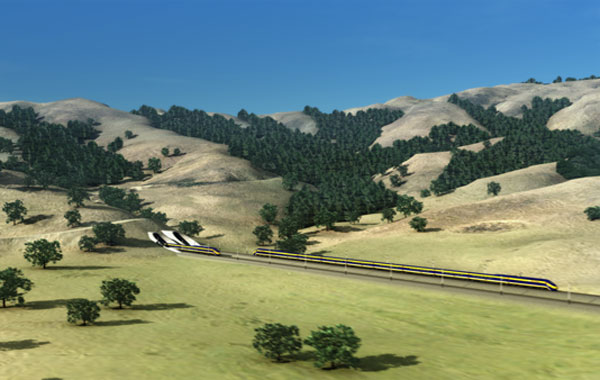
With millions of funding dollars in limbo, the California High
Speed Rail Authority appears to be chugging ahead after a Thursday,
Dec. 17 board meeting in Sacramento.
With millions of funding dollars in limbo, the California High Speed Rail Authority appears to be chugging ahead after a Thursday, Dec. 17 board meeting in Sacramento.
In an e-mail sent to city administrators and councilmembers on Monday, Rod Diridon said a significant portion of the system is funded.
“We had not expected any significant funding to be available by this time, but thanks to the determined HSR support … almost 20 percent of the of the 790-mile CHSRA system is funded, and will be under construction by mid 2012,” wrote Diridon, Executive Director of the Mineta Transportation Institute, in an email sent to Gilroy city officials.
Councilman Perry Woodward said Diridon is, in part, referring to money that could be available to Gilroy in the next couple of years.
“It would be a combination of federal money, and part of the original bond money,” he explained. “Some of it is a segment of the original bond money approved by the voters that has been carved out for California Transportation Commission to dole out.”
In terms of dollar specifics, City Administrator Tom Haglund said Diridon listed several potential pots of gold.
California, for example, was able to obtain an additional $3 billion in federal stimulus funds they weren’t anticipating. There’s also money coming from Proposition 1A, a $9.5 million bond that voters approved when they endorsed the HSR project statewide. Of that, said Haglund, $950 million is allocated for construction projects such as erecting stations and supporting facilities.
In the email, Diridon confirmed the Gilroy/Morgan Hill area is a candidate for the funds, but getting a station location squared away is key, he said.
Since the governors of Ohio and Wisconsin turned down the HSR corridors, Diridon said more than a billion dollars in federal HSR stimulus funds will be spread out to different states.
“California could be getting a very large share of that,” Woodward explained.
Though Haglund hasn’t seen specifics, he said money coming from those two states and other abandoned rail projects may bring more money to cities like Gilroy. With initial construction taking place in the heart of California’s Central Valley area in Fresno, Bakersfield and Merced, Gilroy would be the first stop on the way to the Bay Area.
“I think CHSRA recognizes that in order for any community to adequately plan for a station, we’ll need money we don’t have internally,” said Haglund. “I think we stand a very good chance.”
Diridon said building will begin on the starter segment north of Fresno, then go south to provide access to the Amtrak Station in Bakersfield.
All of this comes on the heels of a Dec. 16 closed meeting between Roelof van Ark, CEO of the California High Speed Rail Authority, and members of a Gilroy and Morgan Hill joint task force, a special subcommittee formed a year and a half ago to deal with CHSRA policies.
At the meeting, van Ark identified a couple of potential sources of revenue.
In light of the recent Diridon email, Mayor Al Pinheiro said it’s nice to see CHSRA officials revisiting concerns raised by council members.
He’s pleased that van Ark has kept in mind points discussed in this month’s previous meeting, including funding possibilities.
“It’s validated a couple of things that were mentioned in the meeting,” said Pinheiro.
The mayor said Diridon’s e-mail indicates things will be moving full speed ahead in the valley. With the Gilroy/Morgan Hill area being in the direct line of travel, there’s no question the city will require monetary support to make the station a reality.
“For people coming in from the valley station towards the Bay Area, we’ll be the first station in,” he said. “That’s where our focus is right now; making sure we’re tapping into those funds that are available.”









